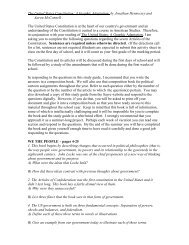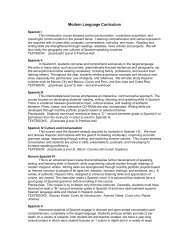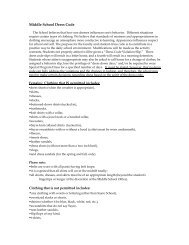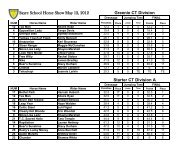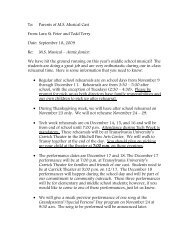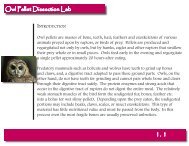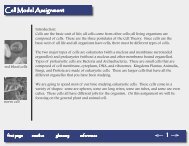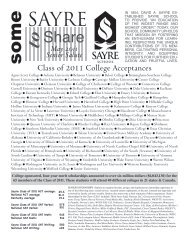Lab 7 Identifying Limiting Nutrient - Sayre School
Lab 7 Identifying Limiting Nutrient - Sayre School
Lab 7 Identifying Limiting Nutrient - Sayre School
Create successful ePaper yourself
Turn your PDF publications into a flip-book with our unique Google optimized e-Paper software.
<strong>Lab</strong> 7: The Ecosystem Drawing<br />
Nitrogen is used to produce proteins and DNA. Despite its abundance in the atmosphere,<br />
nitrogen is often the limiting nutrient for plant growth. This occurs because most plants can<br />
only use nitrogen in two solid forms: ammonium and nitrate. Animals receive the nitrogen they<br />
need for metabolism, growth, and reproduction by eating living or dead organic material.<br />
In the process of nitrification, ammonium is chemically altered by bacteria to form nitrate.<br />
Nitrate is very soluble and it is easily lost from the soil system by leaching. Some of this leached<br />
nitrate flows through the water system where it is returned to the atmosphere by denitrification.<br />
Denitrification is also common in soils and is carried out by heterotrophic bacteria.<br />
Nitrifying Bacteria<br />
Almost all of the nitrogen found in any terrestrial ecosystem originally came from the<br />
atmosphere. Significant amounts enter the soil in rainfall or through the effects of lightning.<br />
The majority, however, is fixed within the soil by bacteria. Members of the bean family form<br />
symbiotic relationships with nitrogen fixing bacteria. In exchange for some nitrogen, the<br />
bacteria receive carbohydrates and a moist environment from the plants.<br />
Humans have altered the nitrogen cycle by:<br />
• The over-use of nitrogen fertilizers has caused nitrate to leach into water. The additional<br />
nitrogen flows into streams, rivers, lakes, and estuaries which can lead to eutrophication.<br />
• The farming of livestock which release large amounts of ammonia into the environment<br />
from their wastes.<br />
• Sewage waste and septic tank leaching.<br />
email us<br />
glossary 7.8



